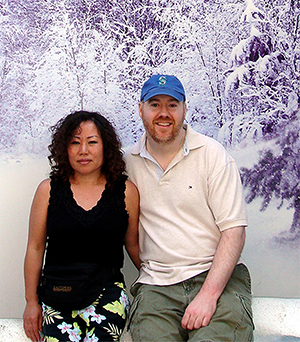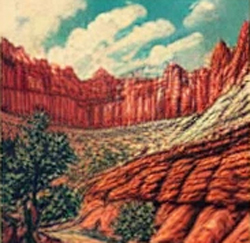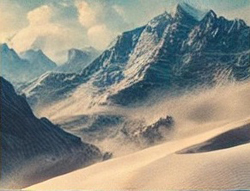
 Photography Tips for Everyday Moments
Photography Tips for Everyday Moments
The most extraordinary beauty is often found in ordinary moments. In this series, William Stanek helps you see the world through a new lens, transforming everyday experiences into stunning photographic memories.
- (May 28, 2025) The Abstract in the Everyday: Experimenting with Shapes and Forms
- Introduction: Seeing Beyond the Literal
- Abstract Composition: Techniques for Composing Images That Emphasize Shape and Form
- Playing with Focus: Using Depth of Field to Create Abstract Effects
- Color and Texture: Experimenting with Color and Texture to Enhance Abstract Compositions
- Finding the Abstract in the Everyday: A New Perspective on Photography
- Conclusion: Embracing the Abstract in Photography

Transform your life with practical wisdom. Discover William Stanek's 'Living Well' series—your guide to a balanced and fulfilling life.
Discover William Stanek's Exclusive Art Collection
Explore and purchase the stunning art featured on this site. Own a piece of William Stanek's unique and captivating artwork today!
(May 28, 2025) The Abstract in the Everyday: Experimenting with Shapes and Forms
Photography often focuses on capturing the literal, the recognizable scenes, and subjects that make up our daily lives. But hidden within these familiar sights is a world of abstraction—shapes, lines, colors, and textures that can be isolated and emphasized to create images that go beyond the ordinary. By experimenting with these abstract elements, you can transform everyday scenes into artistic expressions that invite viewers to see the world in new and unexpected ways. Here, we’ll explore how to find and capture the abstract in the everyday, focusing on techniques for abstract composition, playing with focus, and experimenting with color and texture.
Introduction: Seeing Beyond the Literal
When we look at the world around us, we typically see it in terms of objects and scenes—a chair, a tree, a street corner. But if you strip away the labels and look more closely, you’ll start to notice the shapes, patterns, and forms that make up these everyday objects. It’s in these details that the potential for abstract photography lies.
Abstract photography challenges us to see beyond the literal and to focus on the visual elements that compose our world. It’s about capturing the essence of a subject, not by showing what it is, but by highlighting its shape, color, texture, or form. This approach to photography opens up endless creative possibilities, allowing you to explore the art within the ordinary and to create images that are both intriguing and visually compelling.
In this article, we’ll delve into the art of abstract photography, offering tips on how to compose abstract images, play with focus to create abstract effects, and use color and texture to enhance your compositions.
Abstract Composition: Techniques for Composing Images That Emphasize Shape and Form
Composition is key in abstract photography. Without a clear subject to anchor the image, the way you arrange shapes, lines, and forms within the frame becomes even more important. Abstract composition is about finding balance, rhythm, and harmony in these elements, creating images that draw the viewer’s eye and evoke a sense of curiosity or wonder.
Focusing on Shapes and Lines: One of the simplest ways to create abstract images is to focus on the shapes and lines that make up a scene. Look for strong geometric shapes—like circles, squares, or triangles—or more organic forms, like curves and spirals. These shapes can often be found in architecture, nature, or even the shadows cast by everyday objects. By isolating these elements within the frame, you can create compositions that emphasize the form and structure of the subject, rather than its literal identity.
Using Negative Space: Negative space—the empty or unoccupied areas in a composition—plays a crucial role in abstract photography. By balancing positive and negative space, you can create images that feel more dynamic and visually interesting. Negative space can help to highlight the abstract forms within the image, allowing the viewer’s eye to focus on the shape or pattern that you want to emphasize. Experiment with different amounts of negative space to see how it changes the composition and the mood of your image.
Breaking the Rules: Abstract photography is also an opportunity to break the traditional rules of composition. Don’t be afraid to experiment with unconventional angles, cropping, or framing to create a more abstract effect. For example, tilting the camera can add a sense of movement or disorientation, while cropping an image tightly around a small detail can create a more focused and minimalist composition. The key is to play with the elements within the frame, exploring new ways to see and capture the world around you.
Pro Tip: When composing abstract images, think in terms of balance and harmony. Even though you’re working with abstract elements, the composition should still feel cohesive and intentional. Pay attention to how the shapes, lines, and forms interact within the frame, and adjust your composition until it feels right.
Exercise: Choose a familiar object or scene and focus on isolating the abstract shapes and forms within it. Experiment with different compositions, using negative space, unconventional angles, and close cropping to create abstract images that emphasize shape and form. Reflect on how this approach changes the way you see and photograph the world around you.

Playing with Focus: Using Depth of Field to Create Abstract Effects
Focus is a powerful tool in abstract photography, allowing you to blur the line between reality and abstraction. By playing with depth of field, you can manipulate focus to create images that highlight texture, isolate shapes, or create a sense of mystery and ambiguity.
Selective Focus: Selective focus involves using a shallow depth of field to keep only a small part of the image in sharp focus while the rest of the scene becomes blurred. This technique is perfect for abstract photography, as it allows you to isolate a particular shape, line, or texture within the frame. The blurred areas of the image can create a soft, dreamy effect, drawing attention to the focused element while adding a sense of depth and dimension.
Bokeh and Blur: Bokeh—the aesthetic quality of the out-of-focus areas in an image—can add an abstract, painterly quality to your photos. By shooting with a wide aperture (a low f-stop number), you can create images where points of light become soft, circular blurs, adding a layer of abstraction to the background. Bokeh works particularly well in scenes with lights, reflections, or patterns, where the blurred shapes can create a sense of movement or rhythm within the image.
Out-of-Focus Abstracts: Taking the concept of blur even further, you can create completely out-of-focus images that emphasize color, light, and form over detail. By intentionally defocusing your lens, you can turn a recognizable scene into an abstract composition, where the shapes and colors blend together in a way that feels more like a painting than a photograph. This technique can be particularly effective in capturing the mood or atmosphere of a scene, rather than its literal appearance.
Pro Tip: Experiment with different focal points and apertures to see how they affect the level of abstraction in your images. Use manual focus to control exactly where the sharpness lies, and try shooting with different lenses—such as a macro lens or a telephoto lens—to achieve varying effects.
Exercise: Spend a photography session experimenting with focus and depth of field to create abstract effects. Try using selective focus, bokeh, and intentional blur to emphasize shapes, colors, and textures in your images. Reflect on how these techniques change the way you perceive and capture the world, and how they contribute to a more abstract and artistic approach to photography.
Color and Texture: Experimenting with Color and Texture to Enhance Abstract Compositions
Color and texture are two of the most expressive elements in photography, and they play a particularly important role in abstract photography. By focusing on the interplay of colors and the tactile quality of surfaces, you can create images that are rich in visual interest and emotional impact.
Exploring Color Relationships: In abstract photography, color becomes a primary subject, rather than just a descriptive element. Pay attention to the relationships between colors within the frame—how they contrast, complement, or clash with each other. You can create bold, vibrant images by emphasizing complementary colors, such as blue and orange or red and green, or create a more harmonious and soothing effect by using analogous colors, like blue and green or red and orange. Experiment with different color combinations to see how they affect the mood and feel of your images.
Isolating Color: Another approach is to isolate a single color within a composition, allowing it to become the focal point of the image. This can be achieved through selective focus, as mentioned earlier, or by simplifying the scene to include only one or two dominant colors. Isolating color in this way can create a striking, minimalist image that emphasizes the abstract qualities of the subject.
Highlighting Texture: Texture adds depth and tactility to an image, making it more engaging and immersive. In abstract photography, texture can be used to create patterns, emphasize shapes, or add a sense of physicality to the image. Look for surfaces with interesting textures—like rough bark, smooth metal, or soft fabric—and experiment with different lighting angles to bring out the details. Close-up shots or macro photography can be particularly effective in capturing the intricacies of texture, turning everyday objects into abstract compositions.
Pro Tip: When working with color and texture, consider the lighting conditions. Soft, diffused light can bring out subtle textures and create a gentle interplay of colors, while strong, directional light can enhance contrast and make textures more pronounced. Experiment with different lighting setups to see how they influence the color and texture in your images.
Exercise: Create a series of abstract images that focus on color and texture. Experiment with different color relationships, isolate specific colors, and explore the textures of various surfaces. Reflect on how these elements contribute to the overall mood and impact of your abstract compositions.
Finding the Abstract in the Everyday: A New Perspective on Photography
Abstract photography invites you to see the world in a new way, to focus on the shapes, colors, and textures that often go unnoticed. By experimenting with composition, focus, color, and texture, you can transform everyday scenes into artistic expressions that challenge the viewer’s perception and invite them to explore the abstract beauty of the world around them.
The Art of Seeing: Abstract photography is as much about how you see as it is about what you photograph. It requires a shift in perspective, a willingness to look beyond the obvious and to find beauty in the details. As you develop your abstract photography skills, you’ll discover that the world is full of hidden patterns, forms, and textures just waiting to be captured.
Pro Tip: Keep an open mind and be curious. The best abstract images often come from unexpected places—a shadow on a wall, a reflection in a puddle, or the curve of a building. By staying open to these moments, you’ll start to see the abstract possibilities in everyday life.
Exercise: Spend a day exploring your surroundings with the goal of finding and capturing abstract elements. Focus on shapes, lines, colors, and textures that stand out to you, and use the techniques discussed in this article to create abstract compositions. Reflect on how this approach changes the way you see and interact with the world, and how it enhances your creative vision.

Conclusion: Embracing the Abstract in Photography
Abstract photography offers a way to move beyond the literal and explore the artistic potential of the everyday. By focusing on shapes, forms, colors, and textures, you can create images that challenge the viewer’s perception and invite them to see the world in a new light. As you continue to experiment with abstract photography, remember that the goal is not to capture reality as it is, but to highlight the beauty and complexity that lies beneath the surface.
Use your camera as a tool for exploration, for finding the abstract in the ordinary, and for expressing your unique creative vision. Share your abstract photography with us on Instagram using #AbstractInEveryday. We’re excited to see how you’re capturing the hidden shapes and forms that make up the world around us.

Join William at the crossroads of technology, business, and leadership, where true influence isn't about titles - it's about inspiring action, driving change, and guiding others with integrity. Discover how authentic leadership can transform not just careers, but entire industries.
Bring Inspiration Home
Enhance your space with William Stanek's evocative art. Each piece is crafted to inspire and uplift your everyday life.

Support The Lights of Paris by Robert Stanek, William Stanek's pen name! Through vivid historical detail and deeply moving character stories, Robert takes readers on an unforgettable journey through one of history’s most transformative times.

















